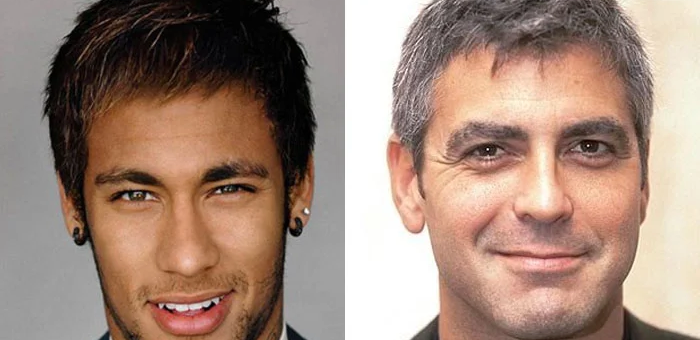
Hair Terminology: How to Tell Your Stylist Exactly What You Want
If you’re trying out a new stylist or attempting a radically new haircut, there’s a chance it won’t work out as well as you planned. Much like changing up your fashion style, the first step to avoiding a poor outcome is knowing exactly what kind of look you want. The second is understanding how to communicate with your stylist effectively.
A Picture is Worth a Thousand Words
We suggest always providing your barber with a reference image whenever possible. A photo of the haircut you’re hoping for will greatly simplify communication. Luckily, finding a great inspiration photo is easier than ever before thanks to sites like Pinterest and Tumblr.
Consider Your Natural Hair
Not every haircut will work on every head or with every type of hair. Men with curly hair can pull off styles men with straight hair could never dream of and vice versa. So take into full consideration the locks you were born with.
If you plan on asking advice from your stylist, be sure to communicate the specifics of your hair. This includes things like a receding hairline, bald spots, cowlicks, or the intention to grow facial hair or sideburns.
Haircut Styles
Buzz Cut
 akutrekkingshop
akutrekkingshop
negozigeox
diego-dalla-palma
loevenichmutze
gabsoutlet
gigasport-online
negozitata
cainsmooredonna
borsalamilanesa
scarpeovye
ynotsaldi
and-camicie
uspoloassnscarpe
ovyeshop
lecopavillon
Buzz-cut-300×147.jpg 300w, https://www.ties.com/blog/wp-content/uploads/2015/03/Buzz-cut-640×314.jpg 640w” alt=”3 men with buzz cuts” width=”700″ height=”343″ />
The Buzz Cut is a generic haircut term for a short, buzzed haircut, and is also known as a military cut. There are several kinds of buzz cuts. You can ask for anything from a super short buzz cut (a.k.a. an induction cut, blade #0-#1) to a longer buzz cut (a.k.a. a butch cut, blade #4 or longer). To be safe, identify the length you want by its blade number. In this manner, you’ll avoid any confusion.
Crew Cut

A Crew Cut has tapered on the sides and back but is longer on top. The top is cut in a uniformly to a single length or tapered slightly with the front longer than the back.
Ivy League

An Ivy league is much like a Crew Cut, but several blade numbers longer. Some barbers will even use scissors for the top of the head instead of clippers. You can also refer to this cut as a Harvard, Princeton Clip, or Brown.
Businessman/Peaked

The Businessman is another simple tapered haircut. The top is cut approximately 2 inches long. The rest is tapered with scissors. That’s why this is also known as The Tapered Cut.
Caesar Cut
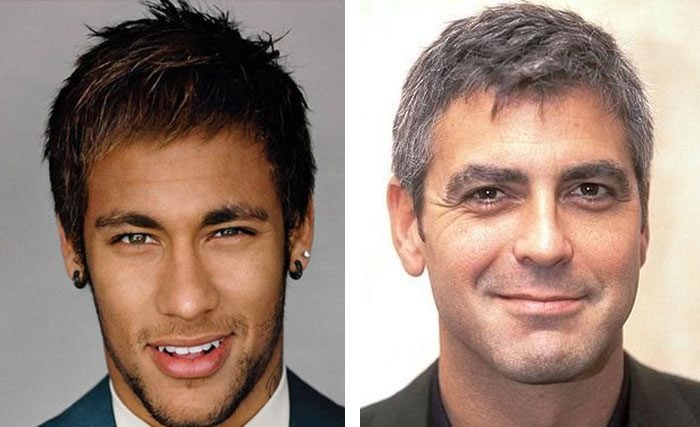
The distinguishing feature of the Caesar Cut is that the top is about an inch longer than the rest of the hair. This style leaves a fringe on your forehead that is combed downward. The sides and back are not tapered.
The Fade

The Fade consists of a very short taper that “fades” into the skin – thus giving this haircut its name. You can ask for your fade to end high on the sides and back (High Fade), low (Low Fade), or at the temples (Temple or Brooklyn Fade).
Comb Over Fade
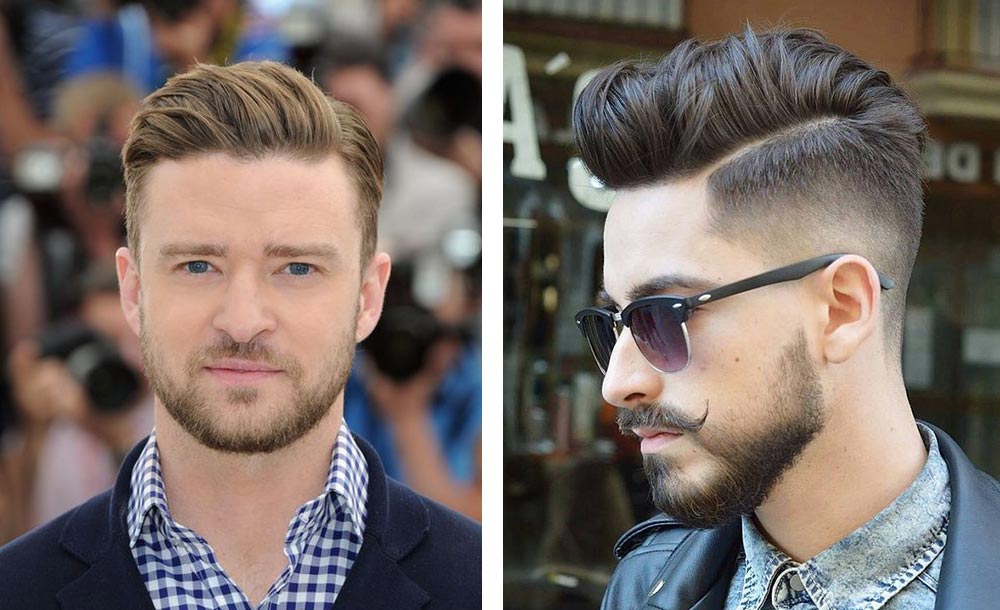
The Comb-over Fade consists of a fade on the side and back but with longer hair on top. The hair is then “combed-over” to the side. This cut is popular with older men, especially those thinning hair. However, younger generations have put an updated twist on this cut by slicking it back instead of parting.
High & Tight

The High & Tight has extremely short sides and about an inch and a half on top. The fade of the High & Tight extends from the nape of the neck to the sideburns. One reason this cut is so popular is that it requires much less maintenance than similar cuts.
Undercut

The Undercut is a trendy haircut in which the sides and back are disconnected from the hair on top. This means very short hair on the sides and back with little to no taper and much more length on top. The result is sharp angles, clean lines, and lots of volume. An Undercut cut can be swept, slicked, and styled in a variety of ways. One modern styling method is The Pompadour, or “James Dean.”
Another variant on the Undercut that has seen a rise in reputation is the Quiff. We like to think of the Quiff as a fusion of a mohawk and a pompadour. In this style, the sides of the head are cut even closer to the skin.
An undercut can be as dramatic or subtle as you like, so long as the underlying principle remains: Long on top. Short on the sides. No taper.
Square/Flair/Shape Up

A Square Cut is a sleek, clean-cut style. It involves cutting a straight line across one’s hairline, sideburns, and neckline. The length of the hair typically cut to a uniform length. However, it has become popular to ask for more length on top. This variation is often referred to as a “Flair” or “Shape Up.”
A square-cut requires a bit more maintenance, as it cuts into and shapes the hairline. When your hair grows back, it can start to look uneven, so you’ll need frequent touch-ups.
Asymmetrical

The Asymmetrical cut offers the right amount of risk and reward for those daring enough to try it. Think of it as the Rock & Roll of hairstyles. It’s called The Asymmetrical because it’s exactly that. Asymmetrical. That means your hair will be longer on one side than the other. The greater the difference in length from side to side, the bolder the cut.
Faux Hawk

If you love Mohawks but don’t want to give your grandma a heart attack, why not opt for the Faux Hawk instead? Think of it as the Mohawks younger brother. For this cut, the sides are cropped shorter than the two-to-three-inch strip of hair that goes down the center of your head. This cut allows you to spike your hair up in the middle, creating a sloping point.
Top Knot

If you’re looking to rock a Top Knot, the first step is to make sure that you have enough hair to tie up in the first place. You’ll need at least 6-10 inches. If you currently have a buzz cut, expect to be growing it out for six months before you can pull off this look. Tell your barber to cut all the hair on the sides and back of your head with clippers, not scissors. Cut correctly, and your hairstyle will achieve the drama a top knot demands. The last step is to gather up all the hair on top and tie it up with a hair tie. Standard placement is the top center of your head.
Long Side Swept
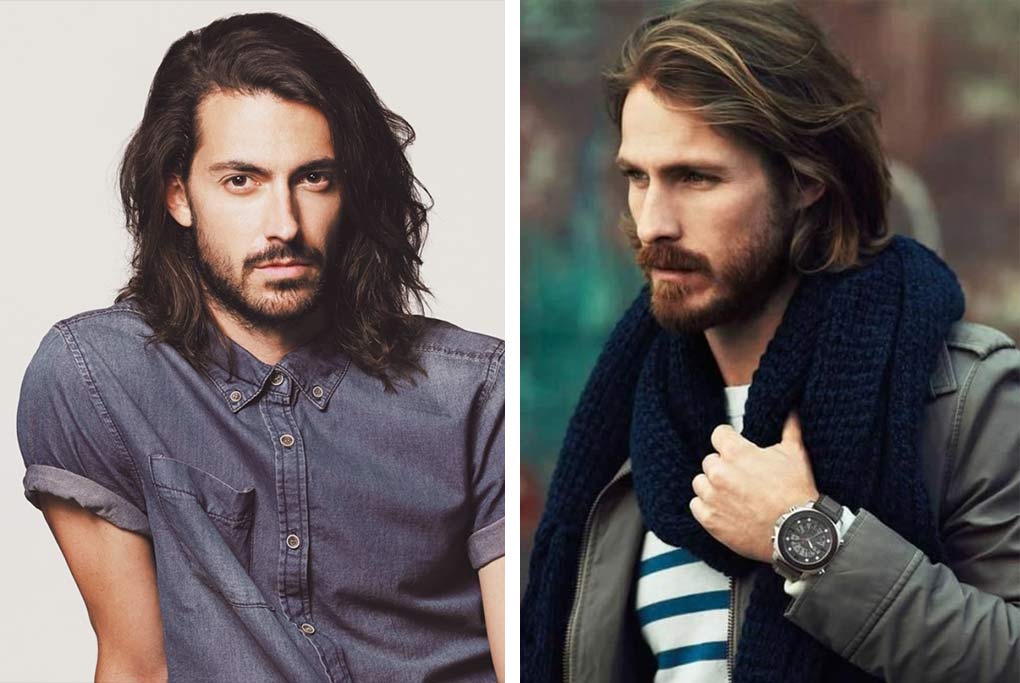
The Side Swept cut is a low-maintenance option that works on both curly and straight hair. A deep side part is key to making the Side Sweep work. You can let it loose and natural or ask for some tapering for a longer swept top and a sleeker hairline cut. This style works particularly well if you have curly hair since it’s a cut that looks better with texture. If you have naturally straight hair, ask your barber for layers to create some additional volume.
Expect to grow your hair out for about six months to a year depending on how long you want the side sweep to be.
Long and Slicked Back
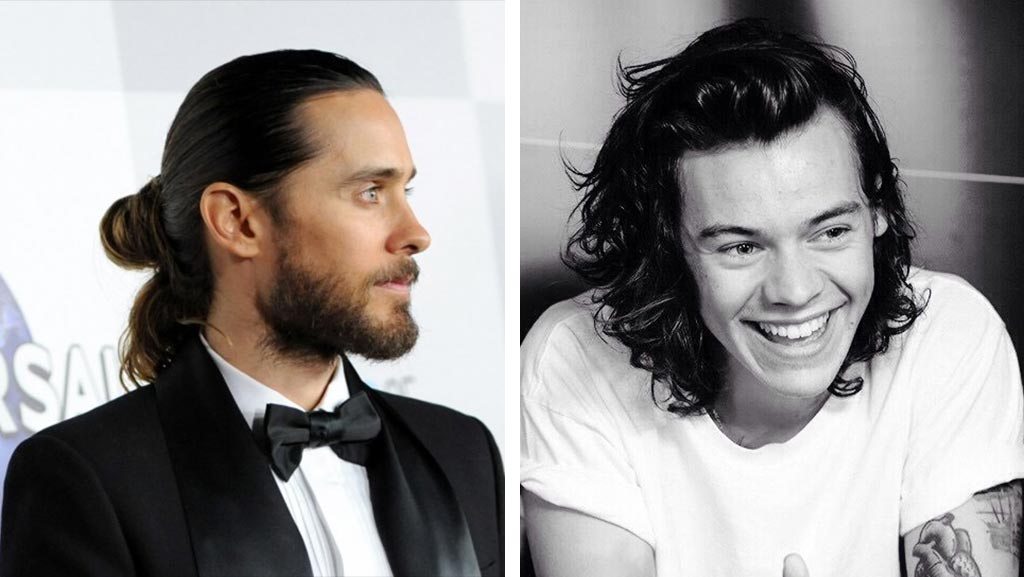
The Slicked Back requires a little bit of length and some more maintenance. Shoulder-length hair works best with this cut. The general consensus is to leave the top layers of your hair long so they can easily be pulled back.
Be patient – it can take six months to a year to grow out your hair, but the hip look is worth the wait.
This is a cut that takes some styling. If you have curly or thick hair, you’ll blow dry it and comb the top of your hair back while your hair is wet. Once dry, use a strong water-based wax to hold it back. Make sure to only do the top of your head so you don’t smooth out your natural curls. You can also ask to get your hair thinned so it’s easier to slick back and maintain.
Neckline Options

The neckline you choose will have a significant impact on the look of your cut. We’ve broken them down to into three styles.
Blocked Neckline
A blocked neckline cuts a straight, sharp line across the natural neckline. It’s a clean and tidy style and has the effect of making your neck look wider than other neckline options. Keep in mind that this neckline may require frequent touch-ups and maintenance as it grows back in.
Rounded Neckline
A rounded neckline is similar to a blocked neckline, but with rounded corners. Like the blocked neckline, this too can start to look untidy after a few weeks.
Tapered Neckline
A tapered neckline follows your natural neckline. It’s called “tapered” because it follows the natural line of your hair and gets shorter toward the back of your head. This style is the most forgiving and remains somewhat blended as your hair grows back in.
Taper vs. Fade
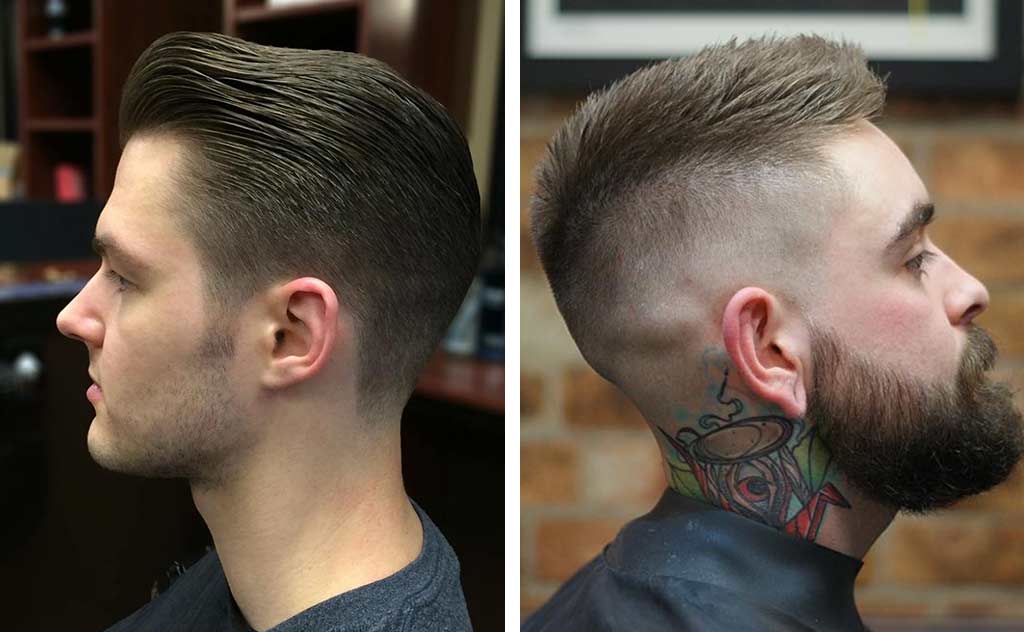
A taper is when your hair gradually changes from one length to another.
A fade is shorter than a taper and ends when it reaches the skin – essentially “fading” in.
Tapers and fades can be achieved with shears, or with clippers that have guards set to various lengths. Either way, watching a masterful barber artfully craft a taper or fade is a mesmerizing process to behold.
Sideburns
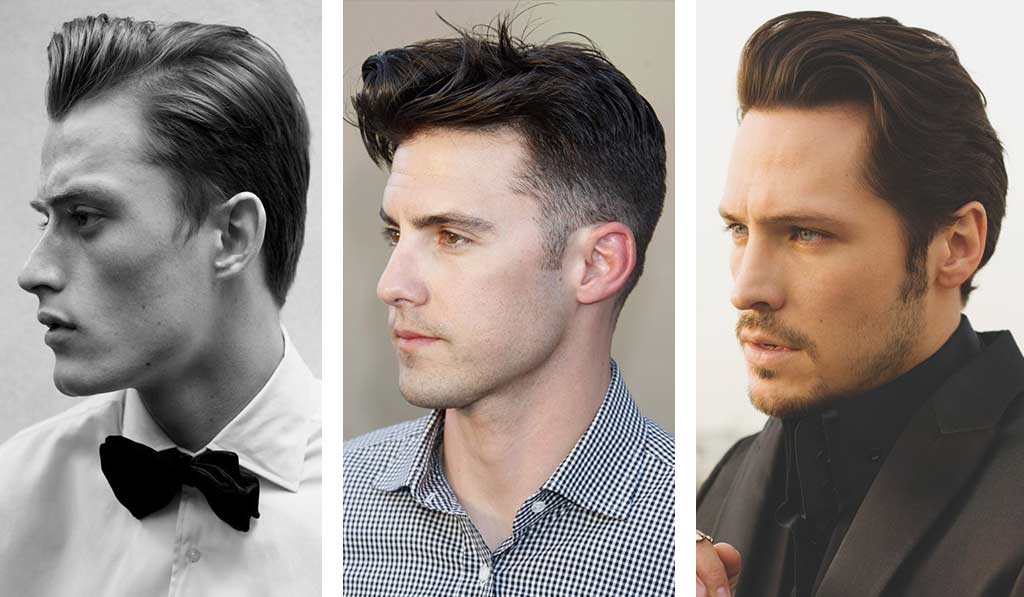
Originally termed Burnsides, sideburns are an essential component to many hairstyles – so be sure to communicate your desired sideburn length. The phrases “top of the ear,” “mid-ear,” or “bottom of the ear” refers to how far your sideburns will extend. You can tell your barber to maintain the current length of the sideburns but clean them up or thin them out.
How Short is Short?
Words like ‘short’ and ‘long,’ and qualifiers ‘a little’ are imprecise. An expert will understand this, and as a rule, will proceed with caution. Often stylists will err on the safe side and leave your hair a bit longer than what you asked. Don’t worry; this is a good thing. Restoring hair after it’s been chopped is impossible. Asking your stylist to take “a bit more off the top” is easy.
However, if you’re certain that you want half an inch trimmed, then say “half an inch.” If you’re unsure, ask your stylist if he is willing to make incremental changes so that you can give feedback.
Texture Options
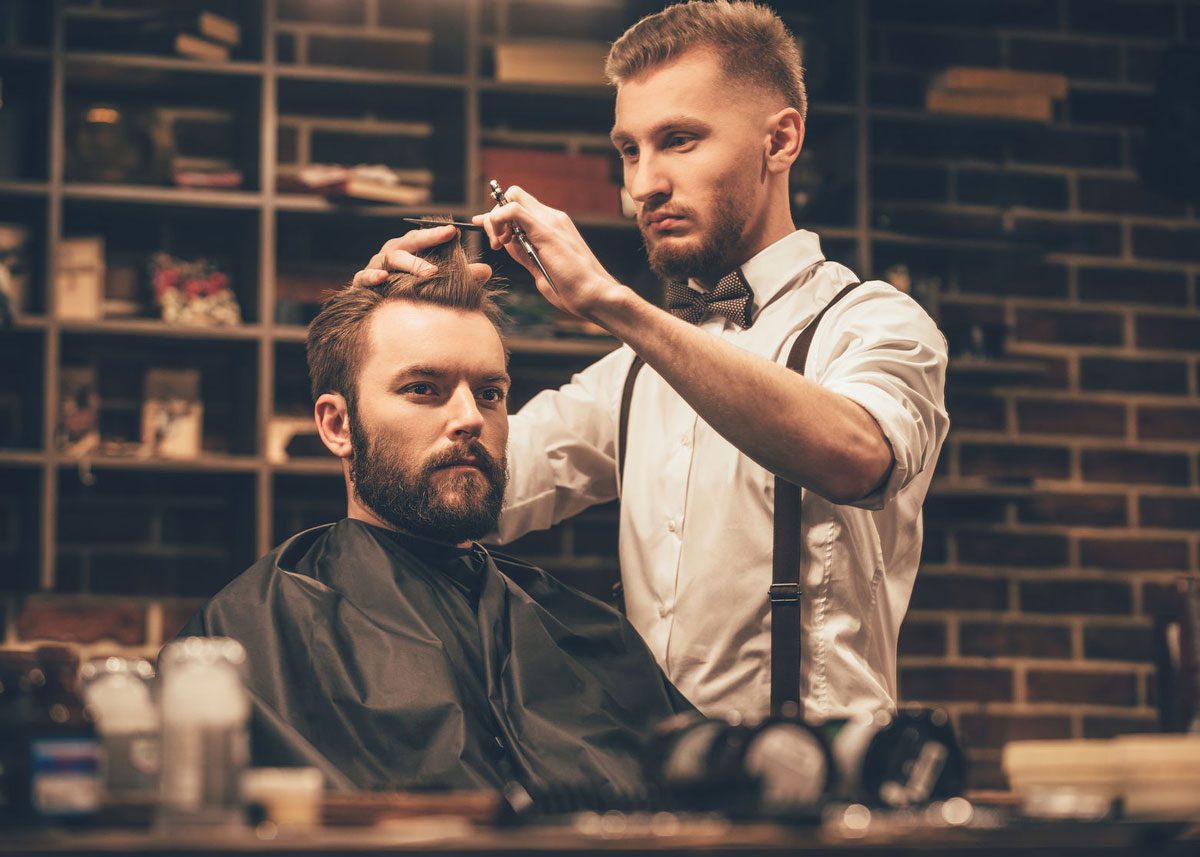
Depending on the kind of hair you have – thick, thin, curly – you may wish to tell your barber how to texturize your hair.
Uneven/Choppy
To add volume or to give a bit of a messier appearance, ask for an uneven, choppy texture. A stylist can achieve this by point-cutting the tips of your hair at a 45-degree angle.
Razored
For something even edgier, ask for razored texture. This technique involves taking a razor blade (or a special pair of scissors with a razor built-in) to the ends of your hair. The result is hair with uneven lengths. Razoring is sometimes used to make curly a bit more manageable.
Layered
If you ask for layered hair, you are asking for hair of varying lengths. The resulting cut allows some sections of hair to rest atop others in layered tiers. The layers can give your haircut the appearance of depth, volume, and fullness.
Thinned
If you have thick hair and wish to reduce its volume, try asking your stylist to thin out your hair. With a pair of thinning scissors, your stylist can cut some strands short but leave the rest long. This will allow your hair to lay flatter naturally and can tame even the thickest of locks.
A Hairy Situation
We hope you learned something from this guide and are inspired to take your hair in new directions.
- On February 6, 2021

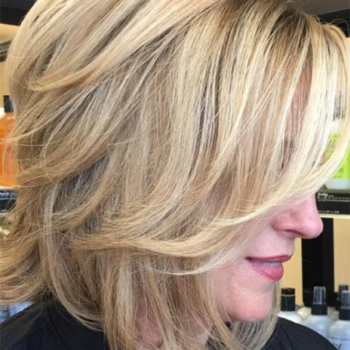
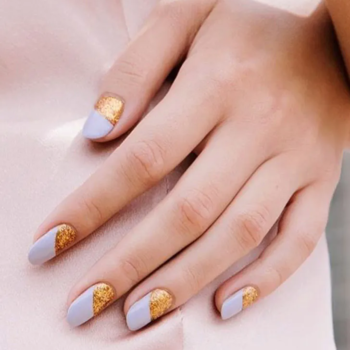
0 Comments